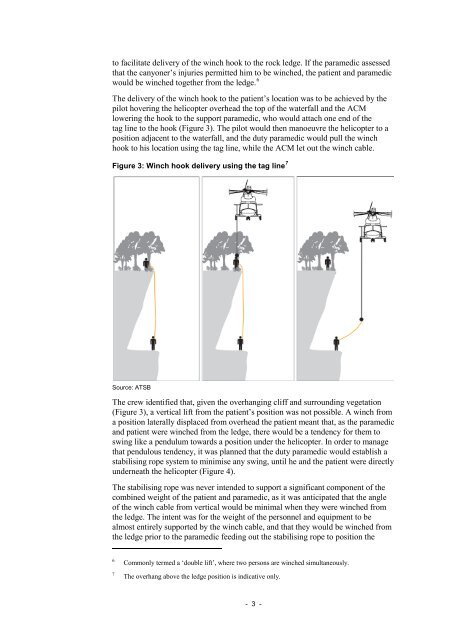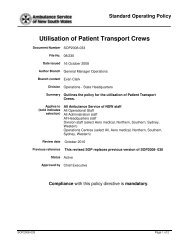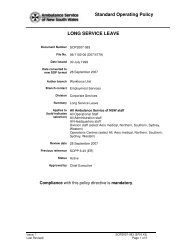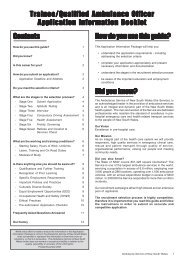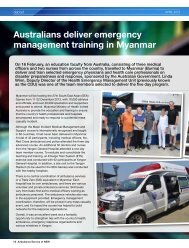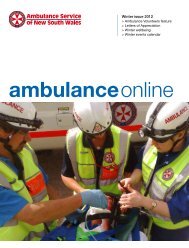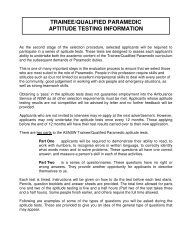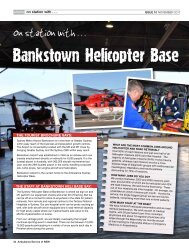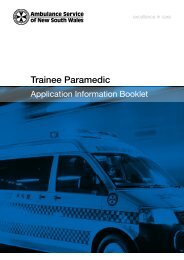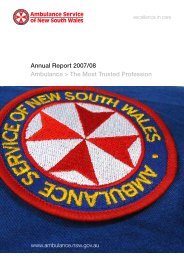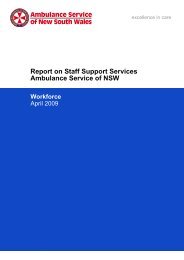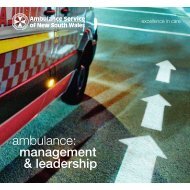atsb final report released 16 may 2013 - Ambulance Service of NSW
atsb final report released 16 may 2013 - Ambulance Service of NSW
atsb final report released 16 may 2013 - Ambulance Service of NSW
Create successful ePaper yourself
Turn your PDF publications into a flip-book with our unique Google optimized e-Paper software.
to facilitate delivery <strong>of</strong> the winch hook to the rock ledge. If the paramedic assessedthat the canyoner’s injuries permitted him to be winched, the patient and paramedicwould be winched together from the ledge. 6The delivery <strong>of</strong> the winch hook to the patient’s location was to be achieved by thepilot hovering the helicopter overhead the top <strong>of</strong> the waterfall and the ACMlowering the hook to the support paramedic, who would attach one end <strong>of</strong> thetag line to the hook (Figure 3). The pilot would then manoeuvre the helicopter to aposition adjacent to the waterfall, and the duty paramedic would pull the winchhook to his location using the tag line, while the ACM let out the winch cable.Figure 3: Winch hook delivery using the tag line 7Source: ATSBThe crew identified that, given the overhanging cliff and surrounding vegetation(Figure 3), a vertical lift from the patient’s position was not possible. A winch froma position laterally displaced from overhead the patient meant that, as the paramedicand patient were winched from the ledge, there would be a tendency for them toswing like a pendulum towards a position under the helicopter. In order to managethat pendulous tendency, it was planned that the duty paramedic would establish astabilising rope system to minimise any swing, until he and the patient were directlyunderneath the helicopter (Figure 4).The stabilising rope was never intended to support a significant component <strong>of</strong> thecombined weight <strong>of</strong> the patient and paramedic, as it was anticipated that the angle<strong>of</strong> the winch cable from vertical would be minimal when they were winched fromthe ledge. The intent was for the weight <strong>of</strong> the personnel and equipment to bealmost entirely supported by the winch cable, and that they would be winched fromthe ledge prior to the paramedic feeding out the stabilising rope to position the67Commonly termed a ‘double lift’, where two persons are winched simultaneously.The overhang above the ledge position is indicative only.- 3 -


